HARO (Help a Reporter Out), recently renamed Connectively, is an outreach media platform that connects journalists and bloggers with expert sources. By answering media requests on topics related to your niche, you can gain exposure in popular publications, increase your brand awareness, and earn valuable backlinks for free.
In this article, we’ll show you how to use HARO backlinks to grow your online presence and authority. We’ll also share tips and best practices to increase your chances of being published.
What Is HARO in SEO and How Does It Help?
Building high-quality backlinks to your website is a key factor in improving search engine optimization (SEO) and earning more organic traffic. HARO and link building as an optimization strategy can get you relevant white hat links from authoritative sites without spending a fortune or begging for them. So, when you get featured in reputable publications, your website gains more visitors and credibility. Your backlink profile is also upgraded.
How Does Connectively (the Former HARO) Work?
Stepping up your SEO game with a HARO link building strategy will lead to rewarding long-term results. But before starting to earn links, you need to set up an account properly.
Let’s see what steps to follow:
1. Register and set up an account on Connectively
Sign up for a free account on Connectively and choose your topics of interest. To find relevant opportunities, you can browse through reporter queries and filter them by category, keyword, deadline, or media outlet. Scan through them and look for the ones that match your expertise. Don’t waste time on queries that are too broad, vague, or irrelevant.
2. Craft compelling HARO pitches and responses
Craft a compelling pitch that answers the query and showcases your value proposition. Include your name, credentials, website URL, and a short bio. Be concise, professional, and helpful.
Send your pitch before the deadline, and follow up if necessary. If the HARO reporter likes your pitch, they’ll contact you for more details or just publish your response with a link to your website.
“Crafting a compelling pitch involves succinctly conveying the value of your content and expertise to the writer. Ensure you address their needs directly, clearly summarize the insight you can offer, and maintain an authoritative yet cooperative tone. This approach increases your chances of getting chosen and sets a solid foundation for a long-lasting professional relationship, opening doors to more backlink opportunities in the future.” — Shane McEvoy, Founder, Flycast Media
3. Engage with journalists and bloggers
Repeat the process and build relationships with reporters. You might be asked to answer additional questions, which is a sign that a reporter is interested in your story. The more you pitch, the more chances you have of getting featured.
Benefits of HARO Link Building
The HARO link building tactic is a way to obtain quality backlinks from authoritative websites by answering journalists’ queries. It’s a win-win situation for both sources and reporters because the latter are actively seeking subject matter experts for their stories. HARO is considered an effective manual link building strategy.
Let’s take a closer look at the benefits of HARO SEO for link building:
Enhancing website authority
By responding to HARO requests that match your niche and expertise, you get press coverage in reputable publications and earned media links to your website. It is one of the best link building strategies to increase your online visibility and authority. When you land links from authoritative websites, you can boost your site’s domain rating (DR) tremendously. Your trust score rises in Google’s eyes, and you can establish yourself as a thought leader.
Improving organic search rankings
Boosting your organic search engine ranking requires engaging content that attracts links from other websites. Moreover, sources gain exposure to a larger audience and potential customers who might be interested in their products/services. When a trusted site links back to you, it transfers link juice to your website. In the eyes of Google, your authority goes up. HARO is one of the most fruitful SEO link building strategies to increase online visibility in search engines.
Increasing referral traffic
The HARO link building tactic allows you to drive more referral traffic to your site. All you have to do is reply with a helpful answer, include a link to your website or blog, and wait to get published. Once your link is up, you can start driving more referral traffic from a credible source.
Some of the daily HARO queries can be from popular media outlets such as Forbes, Business Insider, Huffington Post, etc. Such “big links” are extremely valuable for SEO.
Building valuable relationships with journalists and bloggers
Relationships are built with time, and HARO is no different. Once you prove yourself as a trustworthy source, you have a higher chance of getting picked by a journalist who already knows you.
Top 5 ways to make a good impression on the media:
- Respond quickly and concisely. Journalists are often on tight deadlines and receive hundreds of HARO pitches every day. Catch their attention with a relevant and original response. Make sure you answer all their questions, provide credentials, and include a link to your website.
- Follow up and follow through. If a journalist responds to your pitch and wants to further interview you, be responsive and professional. Provide them with any additional information they need. Thank them for the opportunity and share the story on your social media channels.
- Be respectful and courteous. Don’t spam journalists with irrelevant pitches or send them multiple emails. Don’t ask them to change their story or promote your product or service. Don’t expect them to reply to every pitch or guarantee you coverage. They are doing you a favor by giving you media exposure.
- Focus on the long term. Treat HARO as an opportunity to establish yourself as a trusted expert in your field. Keep in touch with the journalists who have featured you, strengthen the relationship, and offer them more value in the future.
Strategies for Successful HARO Link Building
Getting your pitch noticed among the hundreds of pitches journalists receive each day might be difficult. Statistics report that the average HARO success rate is about 7–15%. But with the right strategy and tools, you can reach a much higher percentage.
5 best HARO link building strategies to improve your chances of success:
1. Identify relevant and authoritative queries
Target queries that are relevant to your audience and area of expertise. Additionally, look for queries from authoritative sources, such as major publications or well-known websites. These will give you more credibility and exposure than obscure or low-quality outlets.
Don’t respond unless you actually have the requisite experience or expertise. It sounds obvious, but you’d be amazed at how many sources expound on subjects about which they clearly have no knowledge. In doing so, they only hurt their own credibility and lessen their chances of being asked for a quote again. After all, writers quickly build impressions about sources, and if they start to perceive you as someone who responds to any request, regardless of the topic, they’ll soon be questioning your credentials.” — Arham Khan, Pixated Agency
2. Make your pitch unique and attention-grabbing
Customize your pitch to fit the specific HARO request and the journalist’s style. Use their name, mention their previous work, and show that you have read their query carefully. Ideally, your subject line should be concise, so try to summarize your main points there.
3. Research out of the box
Dig deeper into Google to find unique and original sources of information that can add value to your pitch. Back up your response with relevant data, statistics, or trends. Use social media, forums, or blogs to find real-life examples and case studies.
“When submitting a quote or tip, support your thoughts with data, studies, or real-life examples. This will leave a strong impression on the writer, making it more likely that they will reference your content in their article, consequently earning you a backlink.” — Will Yang, Head of Growth and Customer Success, Instrumentl
4. Provide valuable insights and expertise
Standout HARO answers require creativity and originality. Add a new spin instead of echoing other works. Provide helpful advice, such as actionable tips, best practices, dos and don’ts. You can also share knowledge about common mistakes to avoid while supporting your argument with facts. Employ this advice to capture attention and leave a lasting impression.
“When you put in the work and offer well-thought-out responses filled with valuable information and insights, it not only adds value to the article but also gives new direction to the writer’s thoughts. Doing this over time adds to your credibility and establishes a healthy pattern where reporters receive high-value info, and you receive high-quality backlinks.” — Ariav Cohen, VP of Marketing & Sales, Proprep
5. Work with multiple personas
If you have more than one website or business, use different personas to pitch different queries. This way, you increase your chances of gaining media visibility and avoid spamming the same journalists with the same pitches. Just make sure each persona has a distinct name, email address, bio, and website link.
Keep in mind that the HARO platform doesn’t let you see the actual email of the person you’re pitching to. If you want to find a particular journalist’s email to directly pitch them your unique story, read my Tomba.io review.
Best Practices for HARO Link Building
How do you make the most out of HARO? By following the best practices that have shown positive results.
Let’s investigate the best HARO link building practices:
- Respond promptly to queries or at the end of deadline
Be quick and responsive. Reporters frequently have strict deadlines, so you need to reply to their queries as soon as possible. The faster you are, the more likely it is to be picked and get a link. Another strategy is to answer right before the deadline.
“Timing is everything when answering queries on HARO and similar platforms. It is common for reporters to receive many answers, and you don’t want your response to be in the middle of their email inbox where the chance of getting ignored is higher. So the best tip I can give is to respond within an hour of receiving a query or right at the end of the deadline.” — Ron Del Rosario, Link Building Manager, Thrive Digital Marketing Agency
- Maintain professionalism in your communications
Follow the reporter’s instructions and format your response accordingly. Include your name, title, website, and a short bio at the end. Thank them for their time and offer to provide more information if needed.
- Tailor your pitches to each query’s requirements
Provide useful information that answers the reporter’s question and highlights your expertise. Don’t pitch your website or product unless it’s directly related to the query.
- Focus on quality over quantity (never use filler content)
Refrain from writing long paragraphs or using jargon. Keep your response short and simple but provide value. Aim for 2-3 sentences per answer.
Use HARO Alternatives to Build Backlinks
There are other websites similar to Connectively that serve the same purpose—getting earned media coverage for your business or brand. They all fall under the umbrella term HARO.
Here are some HARO alternatives that can help you build links from sites with great reputations in the industry:
- SourceBottle: Free online reporter outreach service that helps journalists in finding sources with expertise or insights on various topics.
- #journorequest: This is a Twitter (now rebranded to X) hashtag that shows media requests from various professionals.
- Qwoted: Media platform that connects experts with journalists who need expert commentary, quotes, insights, or opinions for their stories.
- ProfNet: Outreach platform for connecting subject matter experts with journalists seeking sources.
- Featured: Question and answer site that helps marketers share their expertise and get featured in articles on sites such as Fast Company, Yahoo, Zapier, etc.
- Help a B2B Writer: Service that matches B2B content writers with sources who have specific knowledge on various topics.
If you want to know more about these platforms, our top HARO alternatives article has them all covered in detail.
How to Track Your Results With HARO
If you’re using HARO outreach to get media coverage for your brand, you might be wondering how to track your wins and see the results of your efforts.
Here are three ways to find your wins on HARO:
Use Google Search
You can search for your name and company on Google and filter the results by date to see the latest articles that mention you. This way, you can find out which journalists used your pitch and linked to your website. Narrowing down the results by time (past week, past month, or past year) allows you to look for your most recent HARO accomplishments.
Here’s an example of how to search for your name+company for the past week on Google:
All you need to do is change this part “Nikola+Baldikov+InBound+Blogging” with your details. Don’t forget the “+” in between.
This is what it looks like if you’ve been mentioned in the past week:
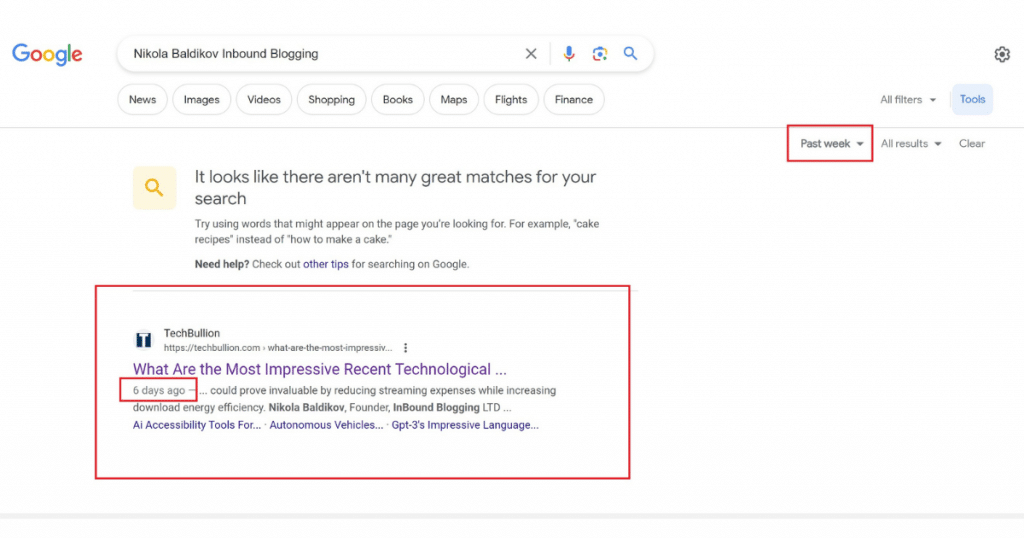
Utilize Ahrefs/Semrush or other tools reporting new backlinks
Another way to find your wins is to use a tool like Ahrefs or Semrush to monitor your new backlinks. These tools can show you the backlinks that your website has gained over time. You can filter them by date and domain authority to see which ones are from HARO. This way, you can measure the effectiveness of your HARO strategy and improve it over time.
In Ahrefs, open the Backlinks report under Site Explorer and enter your domain name. You’ll see a list of all the backlinks to your site, along with metrics like Anchor Text, Authority Score, First Seen, and Last Seen dates. Use filters to find only the new backlinks acquired.
In Semrush, go to the Backlink Analytics tool under SEO and enter your domain name. You will see an overview of your backlink profile, including the number of backlinks, referring domains, and referring IPs. To see individual backlinks, navigate to the Backlinks tab and use the filters for new backlinks.
Other tools that can help you discover new backlinks are Moz, Majestic, and Monitor Backlinks.
Set up Google Alerts
You can also set up Google Alerts for your name and company and be notified whenever someone mentions you online. This can help you catch any HARO wins that you might have missed otherwise.
Google Alerts offers a free service that delivers email notifications when fresh search results appear for specific queries or keywords. By utilizing this tool effectively, you can observe how you’re perceived online. To leverage Google Alerts’ functionality optimally, set alerts for relevant key terms like company name, personal name, product name, etc. You can choose if alerts are delivered daily, weekly, or immediately.
Use brand-mentioning monitoring tools
Finally, you can use a brand-mentioning monitoring tool to track your online reputation and see who is talking about you on the internet. These tools can not only help you find your HARO wins but also understand your audience better through social listening.
Brand monitoring tools are similar to Google Alerts but more sophisticated. They track mentions of your personal name, company, or brand across all channels—the web, social media, blogs, forums, and news sites. These tools provide you with analytics on brand perception and engagement.
List of brand-mentioning tools for HARO tracking:
- Mention.com
- Brand24.com
- Brandmentions.com
- Awario.com
- Talkwalker.com
Persuade Unlinked Mentions and Nofollow Links
Not all HARO link opportunities are created equal. Some of them might only offer unlinked mentions or nofollow links, which are not very helpful for your SEO.
Unlinked mentions are when your name or brand is mentioned without a hyperlink to your website.
Nofollow links are when the hyperlink has a tag that tells search engines not to pass any link juice or authority to your website.
So, how can you persuade journalists and bloggers to give you linked brand mentions and dofollow backlinks instead? Here are some tips:
- Provide value. Provide useful information that answers the query and adds value to the story. Show your expertise and credibility by citing facts, statistics, studies, or personal experiences. The more value you provide, the more likely the journalist or blogger will want to add dofollow backlinks to your website as a source of authority.
- Be concise. Don’t write a long essay or a sales pitch. Keep your HARO response short and sweet; ideally, no more than 200 words. Use bullet points or numbered lists to make it easy to read and scan. The journalist or blogger might be bombarded with hundreds of responses and don’t have time to read through lengthy ones. So, make sure you get to the point quickly and clearly.
- Be polite. Don’t demand or beg for dofollow links. Be respectful and professional in your tone and language. Thank the journalist or blogger for the opportunity and express your interest in their work. Don’t spam them with multiple emails or follow-ups. If they don’t reply or link back to you, don’t take it personally. Just move on to the next relevant link opportunities.
- Be proactive. Don’t wait for HARO queries to come to you. Do some research and find the right ones for you. Look at which major publications and websites cover topics related to your niche or industry. Email them directly, introducing yourself and offering your professional credentials as a source. Explain why you’re relevant and valuable to their audience and how you can help them with their stories.
“Ensure that you’re readily available to respond to writers’ requests, and maintain an open line of communication with them. Offer thorough, concise, and well-structured quotes that not only answer their question but also provide additional insights that are relevant and thought-provoking. By consistently delivering valuable content, you will position yourself as a go-to source for writers who will be more inclined to credit you, thereby generating high-quality backlinks.” — Daniel Chabert, CEO & Founder, PurpleFire
InBound Blogging’s HARO Approach
We are passionate about delivering exceptional content that meets your unique needs and wants. We believe our distinctive approach sets us apart from other HARO service providers. Here’s how it works:
- Onboarding by understanding more about the client
As SEO professionals, we don’t believe in one-size-fits-all solutions. That’s why we ask you to fill out a quick survey about your company’s history, goals, audience, tone, mindset, achievements, and challenges. That’s how we tailor our content to your specific business and make it stand out from the crowd.
- Selecting only relevant pitches
We use our smart algorithm to select only the best pitches and match you with high-domain authority media outlets and websites that will boost your rankings.
- Working with professional writers to provide the best pitches
We work only with experienced and intelligent in-house content writers to ensure we deliver the high-quality HARO service you deserve. They are provided with feedback and guidance throughout the writing process to create pitches and match your expertise. All work is strictly checked for plagiarism, grammar, and spelling errors.
- Paying for powerful links
With InBound Blogging’s pricing plans based on acquired backlinks, you pay for links from reputable sites with Ahrefs domain authority (DR) above 50. You don’t have to worry about low-DR links that don’t bring you any value.
Proof of Our Success With HARO Links
- Link from GetResponse (DR 90)

- Link from Tidio (DR 86)
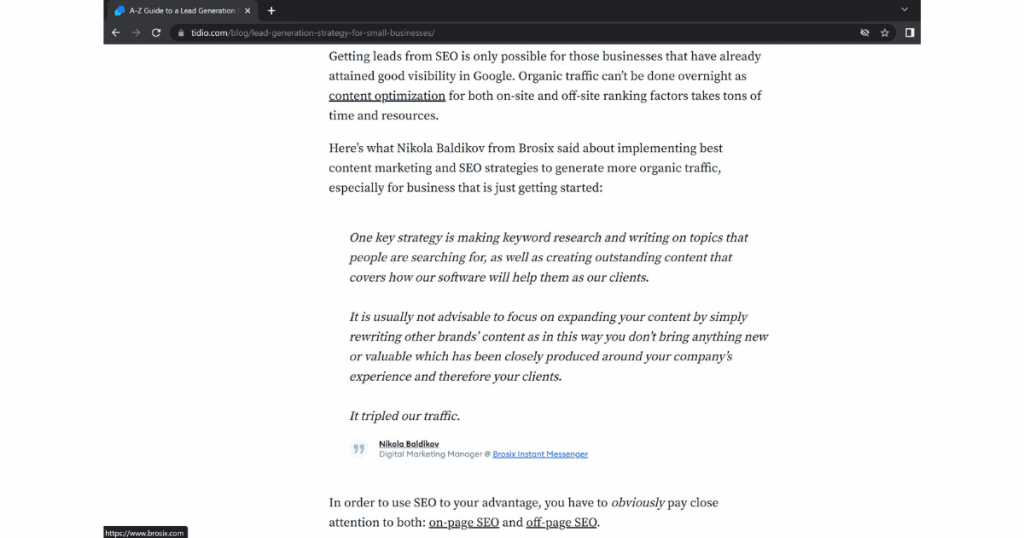
- Link from SmallBizTrends (DR 89)
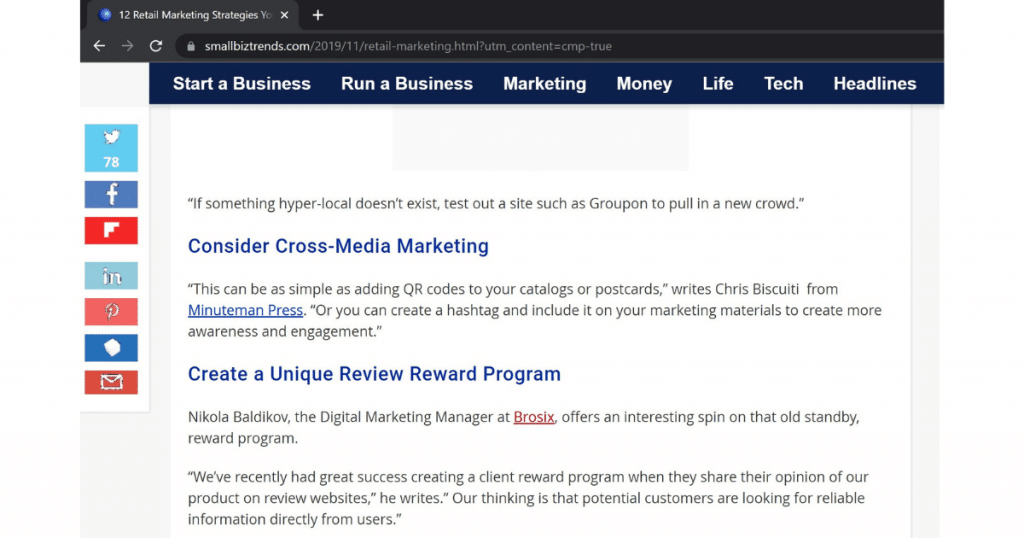
- Link from HousecallPro (DR 84)
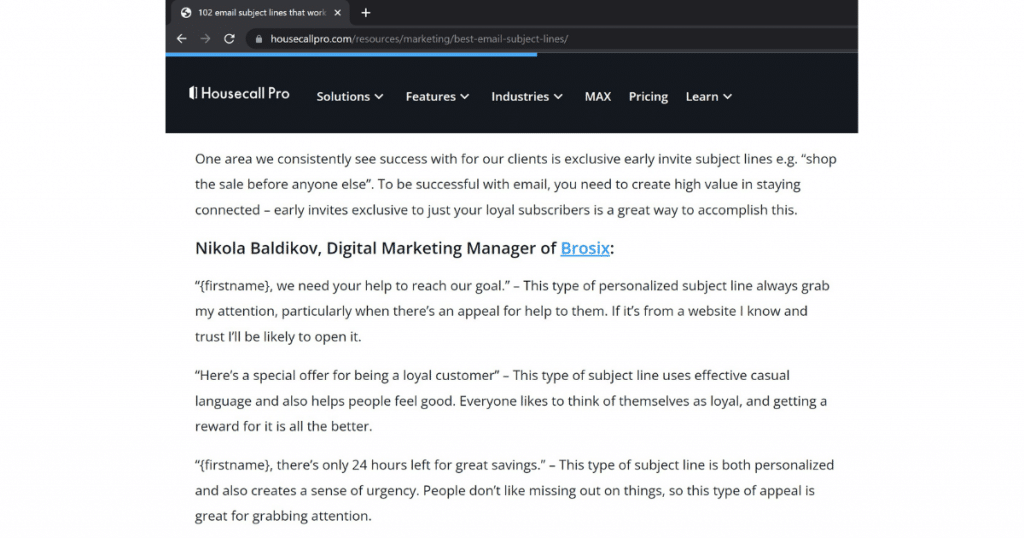
- Link from Keap (DR 83)
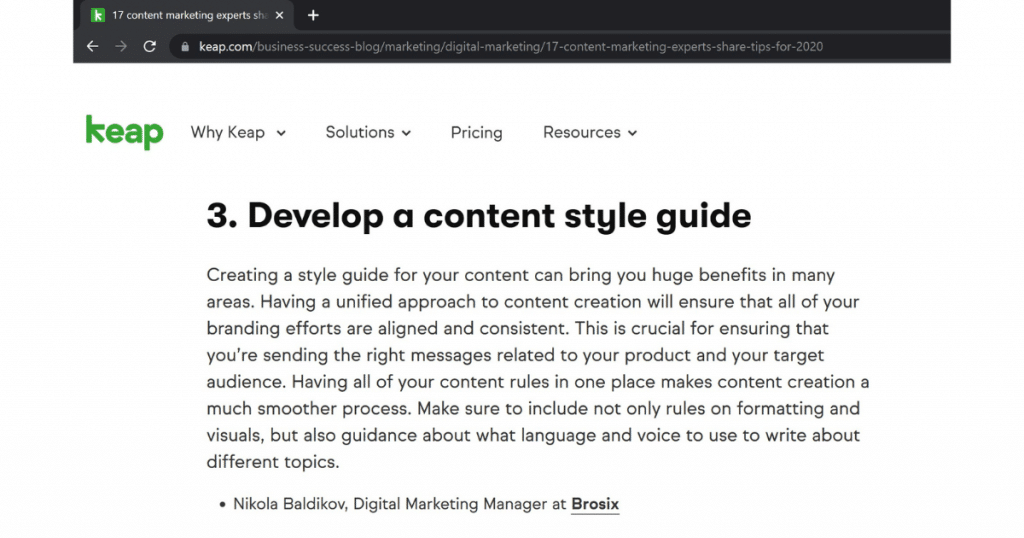
- Link from Lifewire (DR 90)
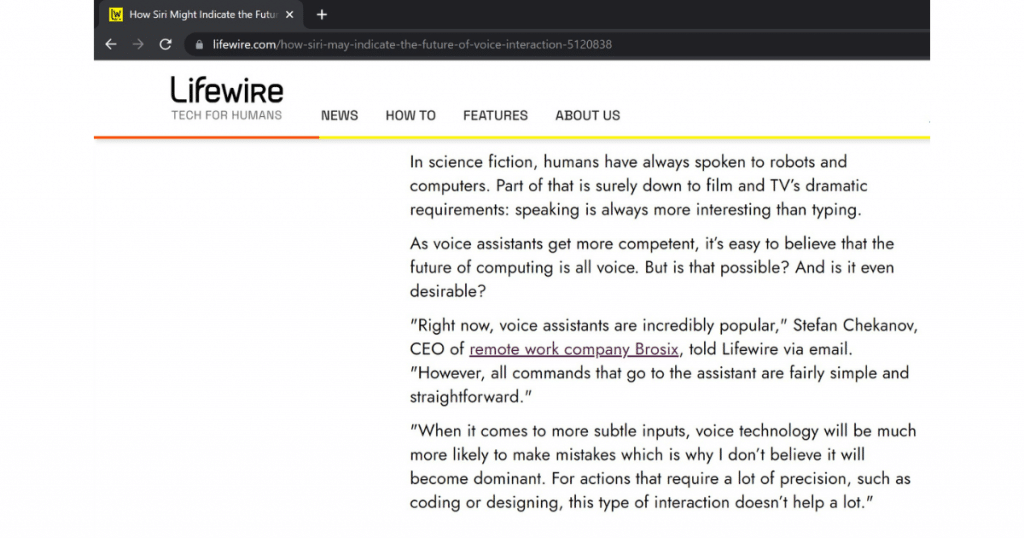
- Link from GoodFirms (DR 85)
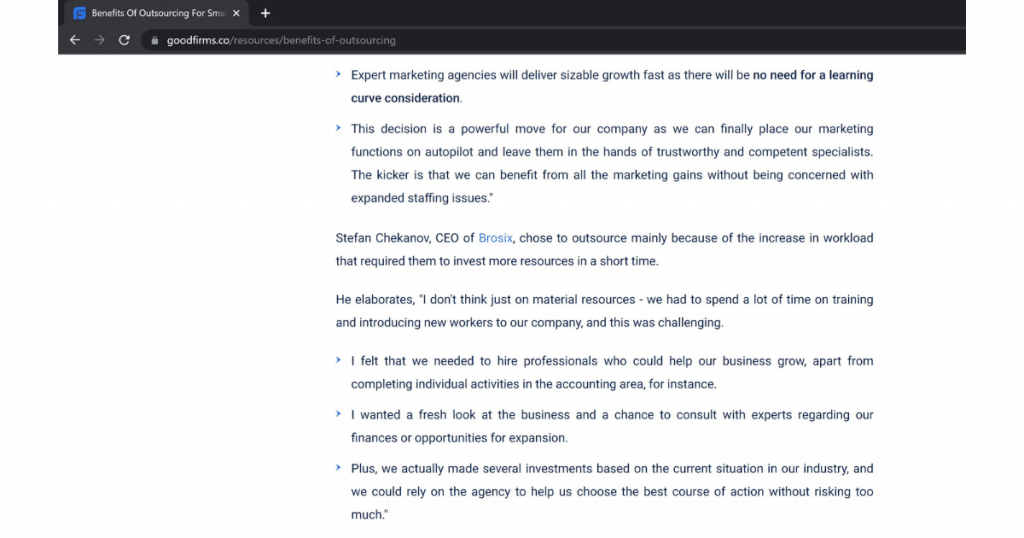
- Link from SmallBusinessCurrents (DR 61)
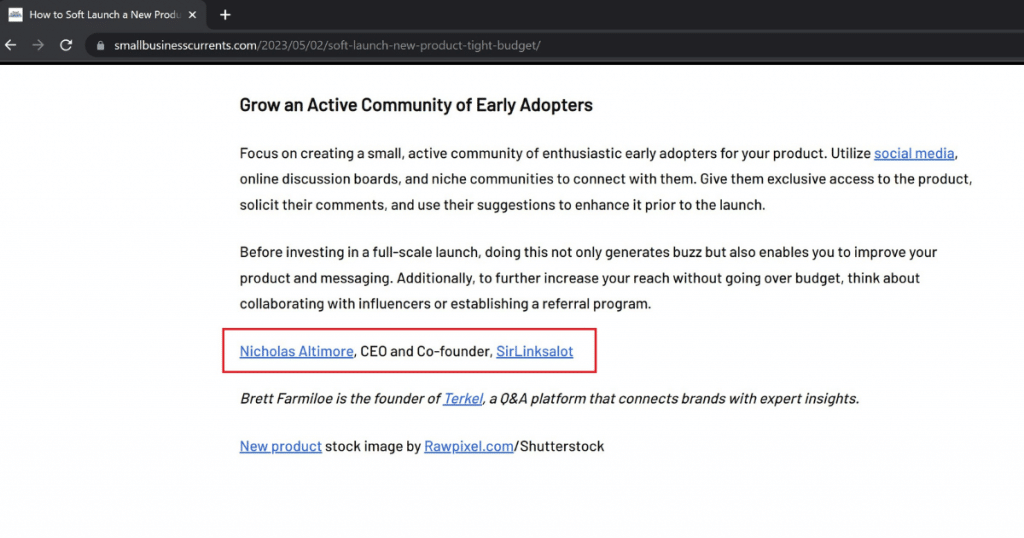
- Link from AZBigMedia (DR 78)
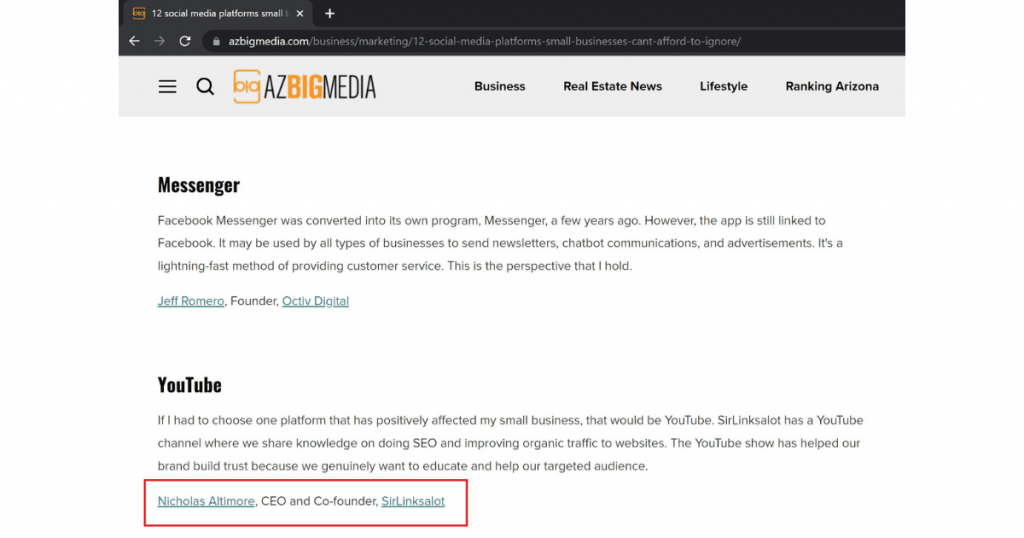
- Link from CEOBlognation (DR 71)
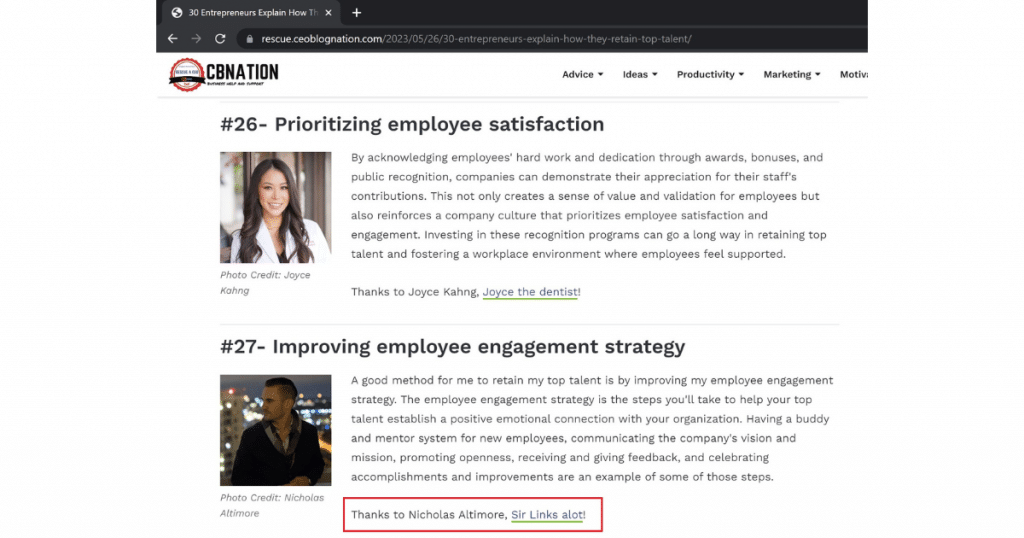
We are confident that you will love working with us and enjoy the benefits of our professional HARO link building service.
Interested in boosting your online presence and credibility with HARO? InBound Blogging is here to help. Contact us today!
Conclusion
HARO link building is a powerful way to boost your website’s visibility and authority in search engines. By answering relevant queries from journalists and bloggers, you can showcase your expertise and earn authority backlinks.
But developing an outstanding pitch is essential. It requires consistency, patience, and creativity to succeed. That’s why you need to implement effective strategies and best practices to maximize your chances of getting media attention and forging lasting connections within the industry. HARO outreach is an investment unlikely to disappoint over time.
Explore the power of PR link building and unlock the potential to elevate your brand’s online presence.
FAQ
What is the ideal response time for HARO queries?
Each query has a deadline, usually within 24 hours or less. The ideal delivery time for HARO pitches is as soon as possible.
The sooner you reply, the higher the chance that the journalist will see your pitch and consider you as a source. If you wait too long, you might miss the deadline or get buried under hundreds of other HARO responses.
How can I increase my chances of getting published?
Being published through Connectively is not guaranteed. You’re competing with many other sources who want the same opportunity.
Here’s how to increase your chances of getting published:
– Read the query carefully and follow the instructions. Don’t pitch something irrelevant or off-topic.
– Write a catchy subject line that summarizes your main point or angle.
– Introduce yourself briefly and mention your credentials and expertise.
– Provide a clear and succinct answer that addresses the journalist’s question.
– Include relevant data, facts, or examples to back up your answer.
– Add a link to your website or portfolio where the journalist can find more information about you.
– Proofread your pitch for grammar, spelling, and punctuation errors.
– Be polite and professional in your tone and language.
Can I use HARO for link building in any niche?
HARO covers a wide range of topics and industries—technology, business and finance, health, travel, sports, lifestyle, etc. You can use HARO for link building in any of these niches, as long as you have noteworthy value as a source.
However, some niches are more competitive than others, so you have to be more selective and strategic. To ease this task, use filters along with selected keywords when searching for matches involving queries pertaining directly to your niche expertise.
How long does it take to see results from HARO link building?
Link building with HARO is not a one-time deal but a long-term strategy. Pitching stories to journalists takes patience and persistence. Seeing results right away shouldn’t necessarily be expected; getting accepted can range from several weeks to months after pitching.
Keep in mind that there’s no guarantee that each pitch will lead to an authority link or even a mention—sometimes a journalist might use your quote without redirecting readers back to you while other times they won’t use it altogether.
Carefully tracking each pitch and following up with journalists can enhance your chances of success down the line. Additionally, you can always rely on tools such as Ahrefs, Semrush, or Moz to better understand which HARO backlinks are impacting your site.



